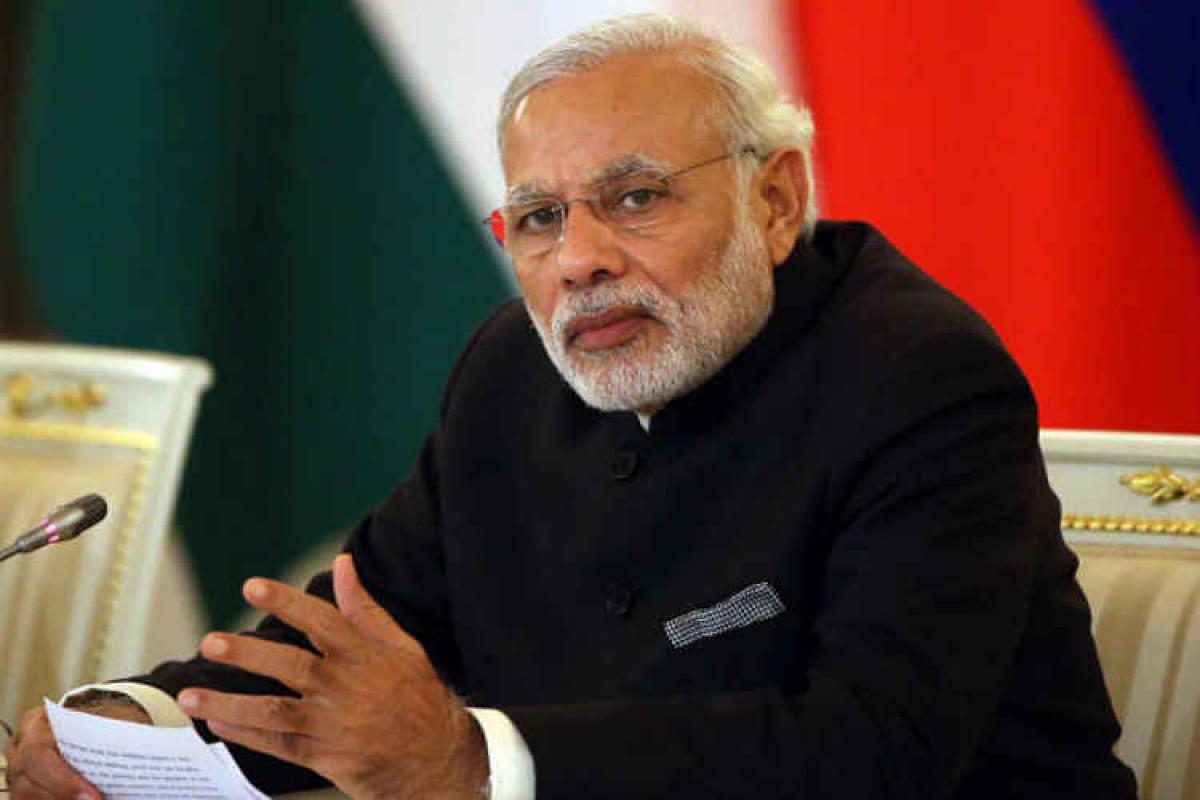Live
- Gold rates in Hyderabad today surges, check the rates on 19 November, 2024
- Jaishankar Meets Chinese FM In Rio: First High-Level Talk Since October Border Deal
- Chinese National Arrested In Delhi For Rs 100 Crore Multi-State Cyber Fraud Operation
- Gold rates in Visakhapatnam today surges, check the rates on 19 November, 2024
- Gold rates in Vijayawada today surges, check the rates on 19 November, 2024
- Do you support caste census? Which one will you prefer caste census or skill census?
- Strengthening Global Test Automation Framework and CI/CD Integration to Prevent Defect Leakage and Accelerate Releases with Praveen Kumar
- Actor Ranveer Brar Battles Spine Injury While Recovering Steadily
- Survey: RWAs to lend a helping hand to citizens
- Three elephants found dead in Sambalpur
Just In

There has been a 42 per cent rise in terrorism-related deaths in Jammu and Kashmir since the Narendra Modi-led Bharatiya Janata Party (BJP) government came to power in May 2014, compared with the last three years of the second term of the Congress-led United Progressive Alliance (UPA-II).
There has been a 42 per cent rise in terrorism-related deaths in Jammu and Kashmir since the Narendra Modi-led Bharatiya Janata Party (BJP) government came to power in May 2014, compared with the last three years of the second term of the Congress-led United Progressive Alliance (UPA-II).
The number of security personnel killed in terrorist violence has increased 72 per cent from 111 in the last three years of UPA-II to 191 in the BJP's first three years, according to data compiled by the South Asia Terrorism Portal (SATP). The SATP compiles data on fatalities from terrorism from media reports. The data are provisional and compiled as on May 24.
The number of civilian deaths in Jammu and Kashmir has also increased by 37 per cent, while terrorist deaths have risen 32 per cent.
The BJP won the 2014 Lok Sabha elections on May 16, 2014, and Narendra Modi was sworn in as India's Prime Minister on May 26, 2014. This analysis takes into account the roughly 36-month period from June 1, 2014, to May 21, 2017, during which the BJP has been in power, and the last three years of the UPA-II government from June 1, 2011, to May 31, 2014.
The BJP had vowed to adopt a "zero tolerance" policy on terrorism in its election manifesto released on April 7, 2014.
Most of the terrorism-related deaths have taken place over the past year, especially after July 8, 2016, when the security forces gunned down terrorist leader Burhan Wani. His death led to violent protests, several months of curfew and an overall deterioration in the state's security situation.
The BJP's third year witnessed 293 terrorism-related deaths in the state, 53 per cent more than the 191 recorded during the second year of its term. This period saw a corresponding increase of 61 per cent in the number of security personnel killed -- 98 killed during the BJP's third year, including the 18 soldiers killed in a terrorist attack on an army garrison in the Kashmir town of Uri on September 18, 2016.
On September 19, 2016, India responded to the Uri attack by mounting surgical strikes on terrorist bases in Pakistan.
The total number of deaths from terrorist violence in the northeast of the country has declined by 12 per cent to 765 during the first three years of the BJP, as compared with 874 during the UPA-II's last three years. The data indicate an overall improvement in the security situation.
The region has, however, become more unsafe for India's security forces, who recorded 62 per cent more casualties among their ranks -- 89 under the BJP as against 55 under UPA-II.
Civilian deaths have declined by 15 per cent to 287 under the BJP's rule while terrorist deaths in security operations have gone down by 19 per cent to 389.
"Organised militancy in the region (northeast) is on the decline," Home Minister Rajnath Singh noted at a northeast review meeting on May 16, 2016. Singh said the central government's initiatives to boost infrastructure in the region and increase security cooperation with neighbouring countries have helped improve the security situation.
The total number of deaths due to Maoist terrorism across India declined by nine per cent to 1,016 under the BJP, from 1,112 in the UPA-II's last three years.
Deaths of security personnel have decreased by 43 per cent under the BJP to 216, as compared with 380 under UPA-II. And civilian deaths have also declined 27 per cent to 328 while the deaths of Maoists in security operations have increased 34 per cent to 472.
However, overall deaths from Maoist violence have increased 60 per cent from 259 in 2014-15 to 414 in 2016-17. The April 24, 2017, ambush by Maoists that killed 26 Central Reserve Paramilitary Force (CRPF) jawans in Chhattisgarh's Sukma district made 2017 the deadliest year for Indian security forces in the past seven years.
This increasing number of casualties, and attacks such as the one in Sukma, indicate a worsening security situation in India's Maoism-affected areas, especially over the past 12 months.
By Abheet Singh Sethi

© 2024 Hyderabad Media House Limited/The Hans India. All rights reserved. Powered by hocalwire.com







